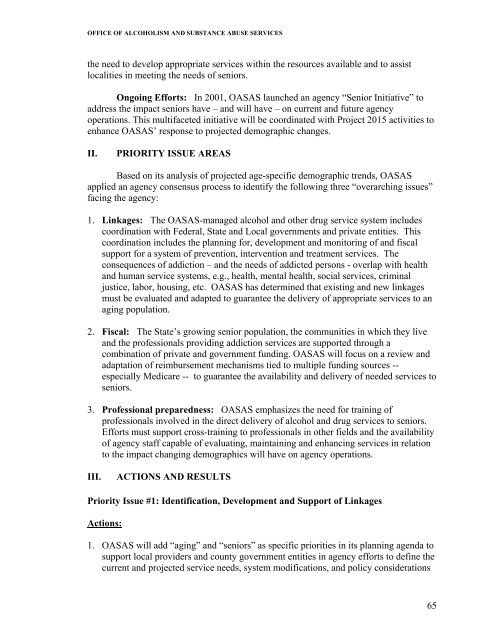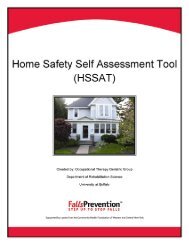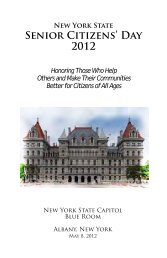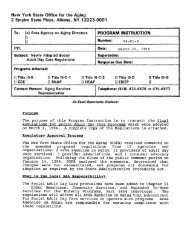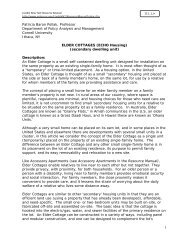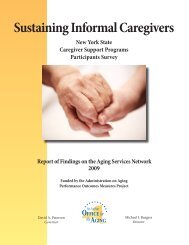White Paper - New York State Office for the Aging
White Paper - New York State Office for the Aging
White Paper - New York State Office for the Aging
- No tags were found...
You also want an ePaper? Increase the reach of your titles
YUMPU automatically turns print PDFs into web optimized ePapers that Google loves.
OFFICE OF ALCOHOLISM AND SUBSTANCE ABUSE SERVICES<br />
<strong>the</strong> need to develop appropriate services within <strong>the</strong> resources available and to assist<br />
localities in meeting <strong>the</strong> needs of seniors.<br />
Ongoing Ef<strong>for</strong>ts: In 2001, OASAS launched an agency “Senior Initiative” to<br />
address <strong>the</strong> impact seniors have – and will have – on current and future agency<br />
operations. This multifaceted initiative will be coordinated with Project 2015 activities to<br />
enhance OASAS’ response to projected demographic changes.<br />
II.<br />
PRIORITY ISSUE AREAS<br />
Based on its analysis of projected age-specific demographic trends, OASAS<br />
applied an agency consensus process to identify <strong>the</strong> following three “overarching issues”<br />
facing <strong>the</strong> agency:<br />
1. Linkages: The OASAS-managed alcohol and o<strong>the</strong>r drug service system includes<br />
coordination with Federal, <strong>State</strong> and Local governments and private entities. This<br />
coordination includes <strong>the</strong> planning <strong>for</strong>, development and monitoring of and fiscal<br />
support <strong>for</strong> a system of prevention, intervention and treatment services. The<br />
consequences of addiction – and <strong>the</strong> needs of addicted persons - overlap with health<br />
and human service systems, e.g., health, mental health, social services, criminal<br />
justice, labor, housing, etc. OASAS has determined that existing and new linkages<br />
must be evaluated and adapted to guarantee <strong>the</strong> delivery of appropriate services to an<br />
aging population.<br />
2. Fiscal: The <strong>State</strong>’s growing senior population, <strong>the</strong> communities in which <strong>the</strong>y live<br />
and <strong>the</strong> professionals providing addiction services are supported through a<br />
combination of private and government funding. OASAS will focus on a review and<br />
adaptation of reimbursement mechanisms tied to multiple funding sources --<br />
especially Medicare -- to guarantee <strong>the</strong> availability and delivery of needed services to<br />
seniors.<br />
3. Professional preparedness: OASAS emphasizes <strong>the</strong> need <strong>for</strong> training of<br />
professionals involved in <strong>the</strong> direct delivery of alcohol and drug services to seniors.<br />
Ef<strong>for</strong>ts must support cross-training to professionals in o<strong>the</strong>r fields and <strong>the</strong> availability<br />
of agency staff capable of evaluating, maintaining and enhancing services in relation<br />
to <strong>the</strong> impact changing demographics will have on agency operations.<br />
III.<br />
ACTIONS AND RESULTS<br />
Priority Issue #1: Identification, Development and Support of Linkages<br />
Actions:<br />
1. OASAS will add “aging” and “seniors” as specific priorities in its planning agenda to<br />
support local providers and county government entities in agency ef<strong>for</strong>ts to define <strong>the</strong><br />
current and projected service needs, system modifications, and policy considerations<br />
65


